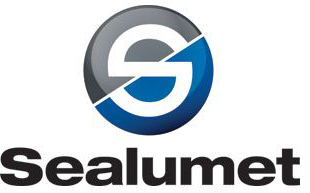Paper No. 17535 – Corrosion Under Insulation Behavior of Phenolic Epoxy Coatings under Contacting and Contact-free Insulations
authors: Ahmad Raza Khan Rana, Graham Brigham, Omar Chaar, George Jarjoura
CUI (corrosion under insulation) is reportedly a contributor to the failure of insulated piping and process equipment. Protective coatings are among various effective measures to manage the CUI of industrial assets. Phenolic epoxy is among the widely used coatings under thermal insulations. This research work involves CUI testing of phenolic epoxy coating for 192 hours as per applicable ASTM standard G189-07 using cyclic wet operating conditions.
Paper No. 17585 – Localized Corrosion Management for Thermally Insulated Systems via Insulation Stand-offs and Low Point Drains
authors: Ahmad Raza Khan Rana, Graham Brigham, Omar Chaar, George Jarjoura
CUI (corrosion under insulation) is a major damage mechanism affecting the integrity of process equipment, piping, and pipelines. CUI is known to create localized corrosion and pitting under thermal insulations which trigger non-linear corrosion rates and end up in unanticipated leaks in industrial assets. Reportedly, detection and management of CUI-driven damages constitute 10% of the maintenance budget in a typical refinery.
Paper No. 17594 – Moisture Management in Thermal Insulations for In-Service and Out of Service Pipelines
authors: Ahmad Raza Khan Rana, Graham Brigham
CUI (Corrosion Under Insulation) is a key degradation in facilities and pipelines and known to drive 40% – 60% failures in the piping systems. CUI is known to trigger from the soaked insulations that are held in contact with the metal(s). Although high operating temperatures are perceived to reduce CUI risks, integrity issues happen due to condensation or sweating once the pipe/ equipment is brought through cyclic temperatures or transient conditions.
Paper No. 19167 – Corrosion Scale And Moisture Assessments – An Improvement To On-Stream Inspections for CUI Management
authors: Ahmad Raza Khan Rana, Graham Brigham, Omar Chaar, Syed Umair Niaz Bukhari
Corrosion under insulation refers to localized corrosion under thermal insulations which has resulted in failure incidents in the hydrocarbons industry. The non-destructive examination (NDE) inspections for in-service assets (pipes, equipment) via stripping-off insulations are generally limited to a few feet (or meters) as the removal of insulations from larger sections is limited by the safety issues and required heat conservations in the assets.
Paper No. 19350 – An Investigation of External Corrosion At Ambient Temperature On Thermally Insulated Pipes Under Ageing Condition
authors: Ahmad Raza Khan Rana, George Jarjoura, Graham Brigham, Syed Umair Niaz Bukhari
Corrosion under insulation (CUI) refers to the external corrosion on the metallic pipe/ equipment body subjected to thermal insulations. CUI manifests localized corrosion (mainly) and has always been a driver behind failures on thermally insulated pipelines.
Paper No. 20890 – Forensic Investigation of Corrosion Under Insulation From Rust Scale Samples
authors: Ahmad Raza Khan Rana, Shahzad Karim, Salwa Alachkar, Touqeer Sohail, Syed Umair Niaz Bukhari, Graham Brigham
Corrosion under insulation (CUI) is among the leading damage mechanisms in oil refining and hydrocarbon production facilities. CUI reportedly drives 40-60 % of the piping-related repairs and constitutes 10% of the overall maintenance spending. Numerous conventional and advanced inspection measures look for the occurrence and severity of CUI.
Paper No. 20894 – Pitfalls in the Typical RBI Methodology for CUI Management Programs
authors: Ahmad Raza Khan Rana, Joel Chapman , Syed Umair Niaz Bukhari, Touqeer Sohail, Graham Brigham
Modern-day risk-based inspection (RBI) platforms are designed to evaluate the safety and/or financial risk of assets using industry-recommended RBI methodologies (e.g., API 581). There are cases where the RBI methodology does not represent the true risk profile of the asset, despite implementing the best possible inspection programs and careful input of inspection data.
Paper No. 21093 – Insulations Ageing & CUI Implications – A Comparison of Lab and Field Samples
authors Ahmad Raza Khan Rana, Shahzad Karim, Salwa AlAchkar, Graham Brigham, Syed Umair Niaz Bukhari
Corrosion under insulation (CUI) is among the leading damage mechanisms in the hydrocarbon industry and its prediction has reportedly been ambiguous as that relies on many unknown unknowns. Insulation condition is one of the key factors in predicting the CUI risk in a modern-day risk-based inspection (RBI) program.
Material Performance – Article Moisture Drainage and Stand-Offs Impacts on insulation Wetting
authors: Ahmad Raza Khan Rana, Graham Brigham
In this study, insulated pipe assemblies with stand-offs and low-point drains were studied for drainage performance. Insulated pipes were soaked with measured aliquots of water followed by quantification of drained water. Patterns of moisture trapping underneath insulation were visualized using moisture detection imaging. A contact-free insulation system with low-point drains achieved maximum drainage efficiency (97%) and the least moisture trapping.
Corrosion Journal – Influence of Insulation Stand-Off Membranes and Moisture Drainage on the CUI Behavior of Out-of-Service Carbon Steel Piping
authors: Ahmad Raza Khan Rana, Omar AlChaar, Jamal Umer, Camille Dromby, Marino Nader, Graham Brigham, and George Jarjoura
Corrosion under insulation (CUI) is reported as being the driver behind the majority of failures in thermally insulated process piping and poses significant maintenance expenditures and service interruptions. Small-bore pipes are more prone to failure from CUI due to their lower wall thickness and lower surface area in comparison to larger diameter pipes. mimic the out-of-service conditions in an industrial field setting.


